Deep tile cleaning in bathrooms and kitchens is essential for maintaining hygiene and aesthetics. Kitchen tiles, prone to spills, dirt, and grease, require thorough deep cleaning to prevent bacterial growth. Preparation includes decluttering, protecting furniture, and focusing on high-traffic areas. Use high-quality tools like a vacuum cleaner, steam mop, protective gear, and microfiber cloths. The process involves sweeping, vacuuming, using detergent solutions, scrubbing stains, and rinsing/drying. For stained tiles, baking soda or vinegar solutions can be applied. Steam cleaning is an effective chemical-free option for thorough cleaning and preservation of tile surfaces. Regular deep cleaning routines ensure appeal and longevity in these vital spaces.
Deep tile cleaning is essential for maintaining a hygienic and sparkling kitchen. Kitchen floors, with their constant exposure to dirt, grease, and spills, require regular deep cleaning to prevent the buildup of grime and bacteria. This article explores the intricacies of deep cleaning for kitchen tile floors, offering practical tips from preparation to maintenance, ensuring your space remains not just clean but also durable and attractive. Learn effective strategies for tackling stains, choosing the right tools, and maintaining a healthy kitchen environment with efficient deep tile cleaning techniques, ideal for both bathrooms and kitchens.
Understanding the Importance of Deep Cleaning for Kitchen Tiles
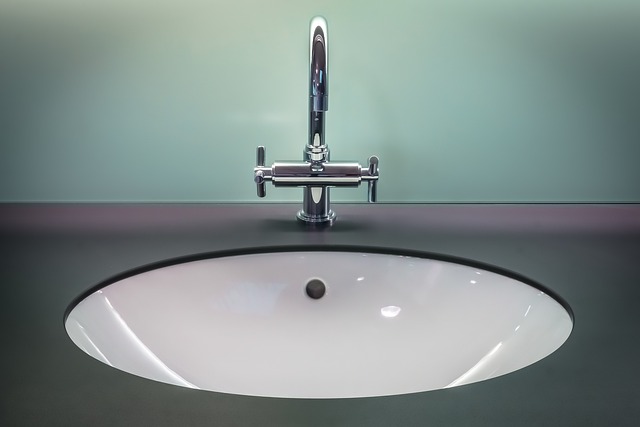
Deep cleaning is an essential aspect of maintaining a hygienic kitchen environment, especially when it comes to tile floors. Kitchen tiles are often subjected to various spills, splashes, and dirt from everyday activities, making them a breeding ground for bacteria and germs if not properly cared for. Regular mopping might remove surface dirt, but deep cleaning goes beyond that, reaching into the pores of the tile and grout to eliminate stubborn stains, grime, and buildup.
Unlike bathroom tiles, kitchen tiles often come into contact with grease, oil, and food residue, which can lead to a less-than-appealing appearance over time. Deep tile cleaning for bathrooms and kitchens is crucial in ensuring that these surfaces remain not just clean but also safe. It helps prevent the spread of bacteria and creates a refreshing ambiance, making your kitchen a more enjoyable space for cooking and entertaining.
Preparing Your Kitchen for an In-depth Cleaning Session
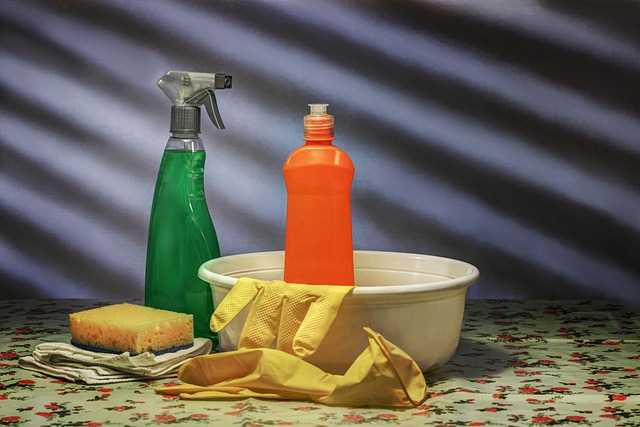
Before diving into the deep cleaning process, preparing your kitchen is a crucial step to ensure optimal results. Start by decluttering the space; remove all dishes, utensils, and appliances from the floors or areas that need extensive cleaning. This clears a path for you to move around with ease while also preventing any accidental breakage of fragile items. Next, cover nearby surfaces and furniture with drop cloths or old towels to protect them from cleaning solutions and debris.
Taking these initial measures creates a safe and accessible environment for deep tile cleaning, ensuring that your kitchen is ready for the process. In terms of specific areas, focus on high-traffic zones like near sinks, stoves, and dining areas, as these often accumulate more dirt and grime than others. This preparation will not only make the task less daunting but also guarantee a cleaner and more hygienic space after the cleaning session, especially for deep tile cleaning for bathrooms and kitchens.
The Right Tools and Equipment for the Job
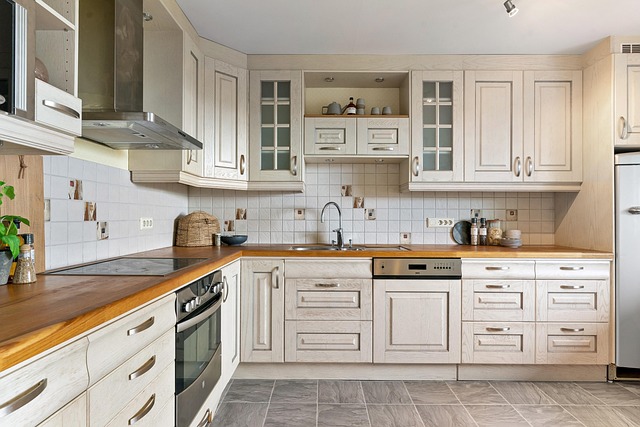
When it comes to deep cleaning kitchen tile floors, having the right tools and equipment is essential for achieving optimal results in bathroom and kitchen tile cleaning. Start with a good quality vacuum cleaner designed for hard floors, which will help remove loose dirt and debris effectively. For more stubborn stains and grout lines, invest in a powerful steam mop. This tool uses hot water and steam to loosen grime, leaving your tiles sparkling clean.
Don’t forget the importance of protective gear, such as gloves and a mask, to ensure a safe cleaning process. Additionally, consider using a microfiber cloth or sponge for detailed cleaning, as these materials are gentle yet efficient at picking up moisture and dirt. Choosing the right equipment will make deep tile cleaning easier and more comprehensive, ensuring your kitchen floors look as good as new.
Effective Steps for Deep Cleaning Kitchen Tile Floors

Deep cleaning kitchen tile floors involves more than a surface scrub. To achieve truly deep tile cleaning for bathrooms and kitchens, start by clearing all furniture from the floor to ensure full access. Remove loose debris with a broom or vacuum to prevent scratching the tiles. For hard-to-reach areas, use a small brush or toothpick to manually remove grime.
Next, prepare a solution of warm water and mild detergent suitable for ceramic or porcelain tiles. Dip your mop in the solution and wring it out well before beginning to avoid over-saturating the floor. Begin mopping from one corner, moving in straight lines across the entire surface. For heavily soiled areas, apply a small amount of tile-safe cleaning solution directly onto the stain, let it sit for several minutes, then scrub thoroughly with a clean sponge or cloth before rinsing. After deep cleaning, dry the floor with a microfiber towel to prevent slipping and enhance its appearance.
4.1. Removing Loose Debris and Vacuuming
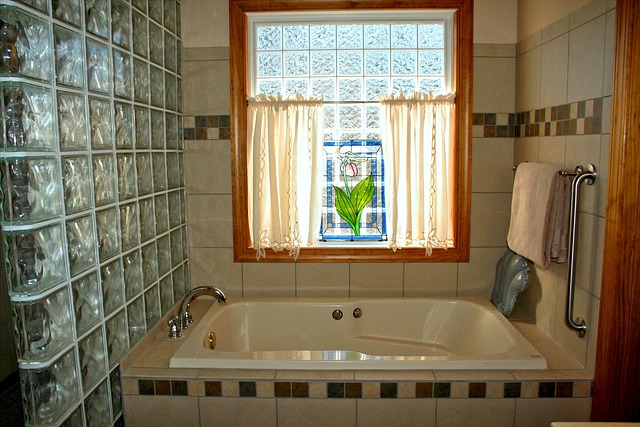
Before diving into the deep cleaning process, it’s crucial to start by removing any loose debris and vacuuming the tile floors. This initial step is a vital part of effective deep tile cleaning for bathrooms and kitchens. Sweep or vacuum thoroughly to eliminate food particles, crumbs, and other small deposits that can obscure the floor’s true appearance and make it more challenging to clean.
Vacuuming with a tool designed for hard floors ensures that you capture all embedded dirt and grime without damaging the tiles or grout lines. This preparation is essential, as it prevents the spread of dirt during the cleaning process and enhances the overall efficiency of the deep cleaning routine.
4.2. Scrubbing Techniques and Detergents
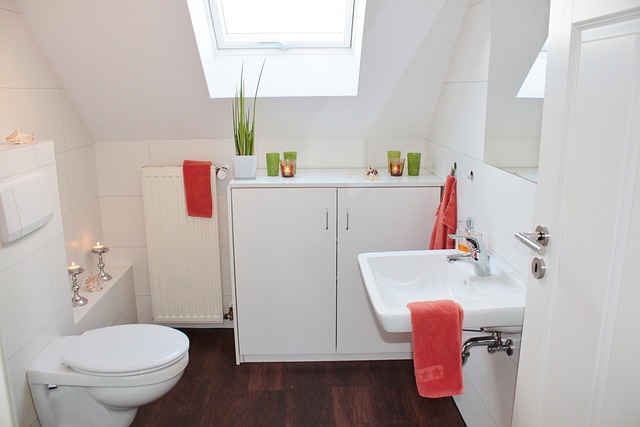
When it comes to deep tile cleaning, especially in kitchens where hygiene is paramount, the right scrubbing techniques and detergents are essential. For bathrooms and kitchens, a robust cleaning routine should involve both physical and chemical methods. Physically, using a scrub brush or sponge with firm yet gentle pressure will help dislodge stubborn dirt and grime from the grout lines and tile surfaces. This hands-on approach is crucial for removing deep-seated debris that regular mopping might miss.
Chemically, selecting the appropriate detergent is key. Opt for a deep tile cleaner designed to tackle bacteria and grime effectively. These products often contain powerful yet safe ingredients that penetrate and dissolve oils, stains, and soap scum commonly found in kitchen tiles. Always follow the manufacturer’s instructions for dilution ratios and application times to ensure optimal results without damaging your tiles or grout.
4.3. Rinsing and Drying Processes
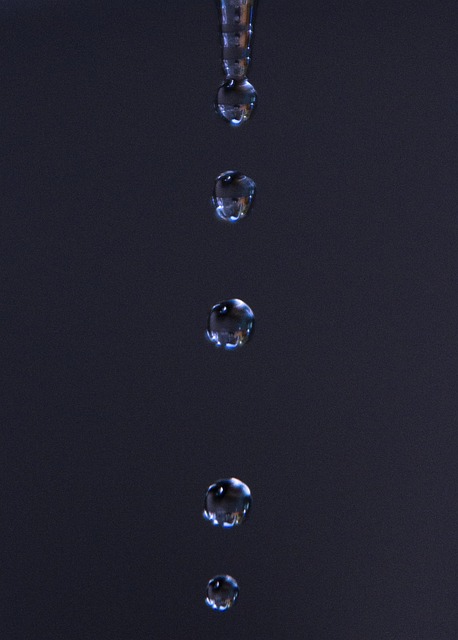
After thoroughly cleaning your kitchen tile floors, it’s crucial to properly rinse and dry them to maintain their longevity and ensure a sparkling finish. Start by emptying any buckets or containers used during the cleaning process to prevent water overflow. Rinse the floor with fresh, warm water using a clean mop or sponge, removing all residue from the cleaning solution.
Allowing the floor to air dry is often the best method, as it prevents water damage and reduces the risk of slipping. However, for faster drying, you can use a clean towel or absorbent cloth to blot the floor, soaking up excess moisture. This step is particularly important in deep tile cleaning for bathrooms and kitchens, where water can seep into grout lines and cause damage over time if left unchecked.
Dealing with Stained or Discolored Tiles
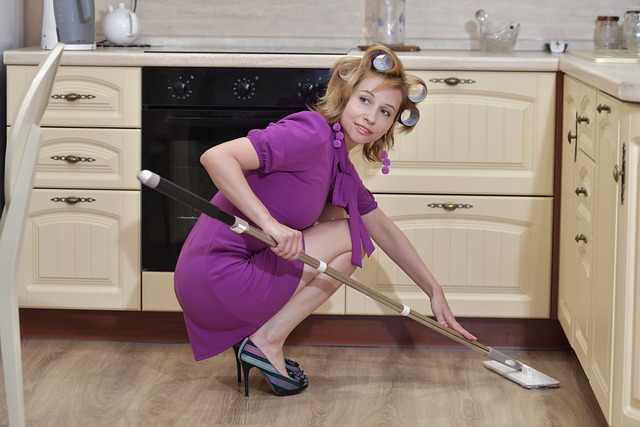
When it comes to deep cleaning kitchen tile floors, dealing with stained or discolored tiles is a common challenge. Over time, spills, dirt, and grime can leave behind unsightly marks that can be difficult to remove. However, deep tile cleaning for bathrooms and kitchens involves using the right tools and techniques to tackle these issues effectively.
For stubborn stains, it’s recommended to create a paste from baking soda and water, apply it to the affected area, let it sit for a few minutes, then scrub gently with a soft-bristled brush. For more severe discoloration, a combination of vinegar and water can be used as a natural cleaner, offering a gentle yet powerful solution that’s safe for both ceramic and porcelain tiles without damaging their finish. Regular deep tile cleaning routines are crucial to maintain the aesthetic appeal and longevity of your kitchen floor tiles.
Steam Cleaning: A Modern Approach to Deep Tile Cleaning
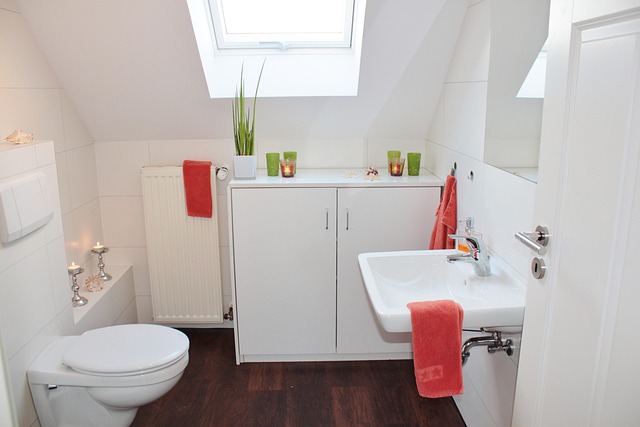
Deep tile cleaning is a necessary task for maintaining the hygiene and aesthetics of bathroom and kitchen floors. Traditional methods often involve scrubbing and using harsh chemicals, which can be tedious and potentially harmful. This is where steam cleaning emerges as a modern approach to deep tile cleaning. By utilizing hot water and steam, this method effectively removes dirt, grime, and even tough stains without resorting to aggressive chemicals.
Steam cleaners inject high-pressure steam into the tiles, loosening debris and breaking down oil and grease. The steam also activates any pre-cleaned solutions, enhancing their cleaning power. This gentle yet powerful approach is especially beneficial for delicate tile surfaces, preserving their finish while ensuring a deep clean. Moreover, steam cleaning leaves no residual chemicals, making it a safer option for families and the environment, contributing to a healthier living space.
